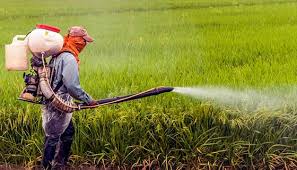
Breaking News
 The preventable plague: How man-made poisons are fueling a Parkinson's epidemic
The preventable plague: How man-made poisons are fueling a Parkinson's epidemic
 Polar vortex unleashes historic cold: Record lows, travel chaos and crop threats
Polar vortex unleashes historic cold: Record lows, travel chaos and crop threats
Top Tech News
 Blue Origin New Glenn 2 Next Launch and How Many Launches in 2026 and 2027
Blue Origin New Glenn 2 Next Launch and How Many Launches in 2026 and 2027
 China's thorium reactor aims to fuse power and parity
China's thorium reactor aims to fuse power and parity
 Ancient way to create penicillin, a medicine from ancient era
Ancient way to create penicillin, a medicine from ancient era
 Goodbye, Cavities? Scientists Just Found a Way to Regrow Tooth Enamel
Goodbye, Cavities? Scientists Just Found a Way to Regrow Tooth Enamel
 Scientists Say They've Figured Out How to Transcribe Your Thoughts From an MRI Scan
Scientists Say They've Figured Out How to Transcribe Your Thoughts From an MRI Scan
 SanDisk stuffed 1 TB of storage into the smallest Type-C thumb drive ever
SanDisk stuffed 1 TB of storage into the smallest Type-C thumb drive ever
 Calling Dr. Grok. Can AI Do Better than Your Primary Physician?
Calling Dr. Grok. Can AI Do Better than Your Primary Physician?
 HUGE 32kWh LiFePO4 DIY Battery w/ 628Ah Cells! 90 Minute Build
HUGE 32kWh LiFePO4 DIY Battery w/ 628Ah Cells! 90 Minute Build
 What Has Bitcoin Become 17 Years After Satoshi Nakamoto Published The Whitepaper?
What Has Bitcoin Become 17 Years After Satoshi Nakamoto Published The Whitepaper?
The preventable plague: How man-made poisons are fueling a Parkinson's epidemic

• Parkinson's disease is largely a preventable illness driven by human-made environmental toxicants, according to a landmark scientific review. The focus must shift from searching for a cure to eliminating the primary causes.
• Three key classes of environmental toxicants are identified as major contributors: specific pesticides (like paraquat), industrial solvents (such as TCE and PCE) and air pollution (PM2.5).
• The disease is strongly linked to industrialization, with its prevalence being five times higher in developed nations. Rapidly industrializing countries like China and India are now seeing the fastest-growing rates.
• A critical barrier to prevention is a systemic failure in research funding. Only two percent of U.S. research on Parkinson's is dedicated to prevention, while 60 percent of funding comes from industries with a vested interest in developing treatments.
• The most urgent solution is to remove these toxicants from the environment by banning dangerous pesticides, enforcing stricter regulations on industrial chemicals and cleaning up contaminated sites to prevent future cases.
A landmark scientific review declares that Parkinson's disease, the world's fastest-growing neurological disorder, is largely a preventable illness driven by human-made environmental toxicants.
The comprehensive analysis, published in the prestigious journal Lancet Neurology and led by Dr. Ray Dorsey of the University of Rochester Medical Center, demands a radical shift in focus from searching for a cure to eliminating the primary causes: pesticides, industrial solvents and air pollution. This groundbreaking work asserts that because these pollutants are introduced by humans, they can be controlled, potentially sparing millions from a debilitating fate.

 The coming (fake) civil war
The coming (fake) civil war How To Make Cardboard Logs
How To Make Cardboard Logs  Unbanked In A Connected World
Unbanked In A Connected World

